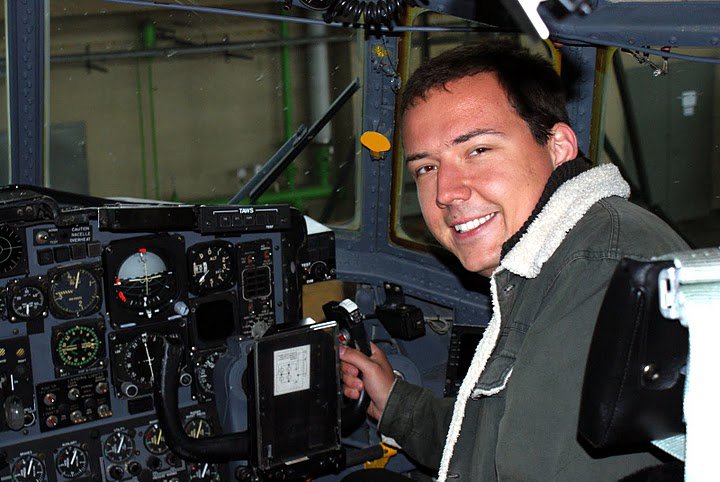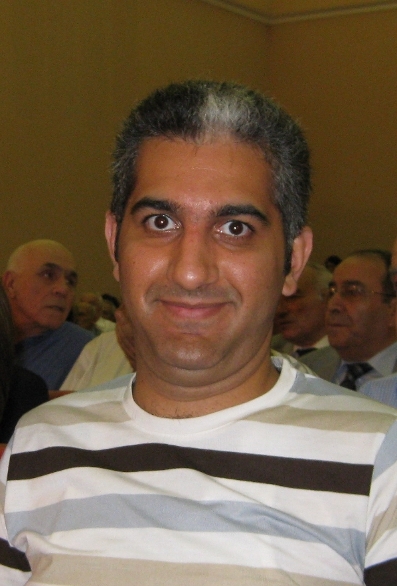STUDENTS INTRODUCE THEMSELVES AND THEIR RESEARCH
by Agnieszka Rys (IAC, Spain)
During the school we came up with the idea to ask the participants a few questions that would show their stories: what their path to becoming an astronomer was like, why they think doing (astronomical) reasearch is important - and why it is crucial to communicate science to the public. They also try to explain their research in simple terms so that anyone can try and understand it. Enjoy the reading!
"If you can't explain it simply, you don't understand it
well enough" (Albert Einstein)
OK, we're not Einsteins but we do hope that we can be of some use to those of you who are wondering what people like us do but who feel lost dealing with tons of foreign-sounding terms!
 Agnieszka Rys (Spain/Poland).
My research revolves around dwarf elliptical galaxies in the Virgo Cluster (the name Virgo gives you a hint as to where to look for it in the sky:-) Some could think that these aren't interesting objects: small, round(ish) and not-so-pretty. But we know that there's more to these dwarfs than meets the eye.
It all comes down to the question: 'how do galaxies form?' We think dwarf galaxies might be "bricks" from which nicely-shaped "houses" (e.g. our Milky Way spiral galaxy) are formed. But they might also be "debris", remnants of galaxies that once looked different but have gone through a lot in their lifetimes (met other galaxies on their way for example) which reshaped their appearance. In this case, we know that if we look carefully enough, we will be able to see some of the original "ingredients", or shapes, hiding beneath their apparently dull outer face.
This also leads us to ask: 'how do these galaxies form their stars?' Do they form them all at once at the beginning and then decide not to work any more? Do they continue doing the (star-forming) job over extended periods of time? Do they stop at first but later get down to work again, encouraged, for example, by other galaxies that happen to come down their way? We can try and answer all these questions analyzing our images and spectra that we get from observing galaxies with our telescopes.
But we want to know even more. There exists something that we call dark matter. That's a though guy to work with because, as the name suggests, it doesn't want to be seen and hides from us. So, we play along and look for "traces" of its presence. How? Imagine you're at home, looking out of the window on a very windy day. You don't see the wind itself but you can see that people have difficulty walking, that branches of trees are being bent, maybe some smaller objects are being carried away in the air. The wind, itself invisible, changes the way things move. That's exactly what dark matter does, too. By observing how it changes the movement of visible objects, we can infer its properties like mass or shape for example. Smart, isn't it?:-)
Agnieszka Rys (Spain/Poland).
My research revolves around dwarf elliptical galaxies in the Virgo Cluster (the name Virgo gives you a hint as to where to look for it in the sky:-) Some could think that these aren't interesting objects: small, round(ish) and not-so-pretty. But we know that there's more to these dwarfs than meets the eye.
It all comes down to the question: 'how do galaxies form?' We think dwarf galaxies might be "bricks" from which nicely-shaped "houses" (e.g. our Milky Way spiral galaxy) are formed. But they might also be "debris", remnants of galaxies that once looked different but have gone through a lot in their lifetimes (met other galaxies on their way for example) which reshaped their appearance. In this case, we know that if we look carefully enough, we will be able to see some of the original "ingredients", or shapes, hiding beneath their apparently dull outer face.
This also leads us to ask: 'how do these galaxies form their stars?' Do they form them all at once at the beginning and then decide not to work any more? Do they continue doing the (star-forming) job over extended periods of time? Do they stop at first but later get down to work again, encouraged, for example, by other galaxies that happen to come down their way? We can try and answer all these questions analyzing our images and spectra that we get from observing galaxies with our telescopes.
But we want to know even more. There exists something that we call dark matter. That's a though guy to work with because, as the name suggests, it doesn't want to be seen and hides from us. So, we play along and look for "traces" of its presence. How? Imagine you're at home, looking out of the window on a very windy day. You don't see the wind itself but you can see that people have difficulty walking, that branches of trees are being bent, maybe some smaller objects are being carried away in the air. The wind, itself invisible, changes the way things move. That's exactly what dark matter does, too. By observing how it changes the movement of visible objects, we can infer its properties like mass or shape for example. Smart, isn't it?:-)
 Rade Marjanovic (Serbia).
My research is about most energetic particles in Universe, called cosmic rays, which are not actually radiation. They were historically misnamed. It is important to investigate them because we gain knowledge about many highly-energetic processes that occur in our Universe (supernova explosions, which are violent explosions of stars). They also help us predict the behavior of our Sun, as well as its manifestations on the Earth and its surroundings. So we get to predict whether or not there will be power failure (like in U.S. in 2003.) or other significant consequence for Earth and everything on it from the data carried by cosmic rays. But there is still a lot of work that must be done before precise predictions. So join us and become a scientist.
Rade Marjanovic (Serbia).
My research is about most energetic particles in Universe, called cosmic rays, which are not actually radiation. They were historically misnamed. It is important to investigate them because we gain knowledge about many highly-energetic processes that occur in our Universe (supernova explosions, which are violent explosions of stars). They also help us predict the behavior of our Sun, as well as its manifestations on the Earth and its surroundings. So we get to predict whether or not there will be power failure (like in U.S. in 2003.) or other significant consequence for Earth and everything on it from the data carried by cosmic rays. But there is still a lot of work that must be done before precise predictions. So join us and become a scientist.
 Hoda Shariati (Iran).
let's assume a large group of stars gather together, from now on we name it galaxy,they are really look like flies which fly around sweet,so there must be some thing very delicious at the center. what is it?yes a very massive body,full of energy.do you know why? because of newton law of gravity explains that 2 body which have mass can attract each other,so when these large group of stars rotate around another body it must be very massive. a super massive black hole is similar to a vary kind mother which, all children want her kiss them and hug them.so they rotate and try to find a way to go closer to her,so we have accretion disk around super massive black hole. but after a while mother become sick and tired of her numerous amount of children who want to spoil themselves for her, so she just started pushing them away to be relax so we have jets which transfer from black hole!!!
Hoda Shariati (Iran).
let's assume a large group of stars gather together, from now on we name it galaxy,they are really look like flies which fly around sweet,so there must be some thing very delicious at the center. what is it?yes a very massive body,full of energy.do you know why? because of newton law of gravity explains that 2 body which have mass can attract each other,so when these large group of stars rotate around another body it must be very massive. a super massive black hole is similar to a vary kind mother which, all children want her kiss them and hug them.so they rotate and try to find a way to go closer to her,so we have accretion disk around super massive black hole. but after a while mother become sick and tired of her numerous amount of children who want to spoil themselves for her, so she just started pushing them away to be relax so we have jets which transfer from black hole!!!
|
 Remigiusz Pospieszynski (Poland).
In scientific terms my research was 'to design, build and optimise
Virtual Ion Composition Analyser (Virtual ICA) and study its different
modes'. The real instrument is on board the Rosetta space probe which is scheduled to reach comet 67P/Churyumov-Gerashimenko in 2014. Simply speaking ICA s a simulator which produces results which we hope will be
similar to the data obtained from the real instrument. What about the
'different modes'? Well, the probe is very far away (during its 'prime
time' it will be more than 100 mln km from the Earth). This means we
will have only very limited bandwidth (lets call it 'slow Internet
connection') and the amount of data we can transmit is also very
limited. Now, imagine that our data is streamed just like, e.g.,
a football match on the Internet. If you watch a game you can do it on
Full High Definition TV or on your mobile phone with rather small
screen. In both cases you will be able to tell if there was a goal or
if somebody was fouled. But what if you want to know more? Some people
would like to know the brand of player's shoes or the manufacturer of
the ball? Obviously you won't notice the logos on you two-inch-screen
of your mobile phone. This is exactly what I've done - I simulated the
different qualities of the image because some scientists would like to
know who manufactured the ball and others will be satisfied just with
the final result of the match.
Remigiusz Pospieszynski (Poland).
In scientific terms my research was 'to design, build and optimise
Virtual Ion Composition Analyser (Virtual ICA) and study its different
modes'. The real instrument is on board the Rosetta space probe which is scheduled to reach comet 67P/Churyumov-Gerashimenko in 2014. Simply speaking ICA s a simulator which produces results which we hope will be
similar to the data obtained from the real instrument. What about the
'different modes'? Well, the probe is very far away (during its 'prime
time' it will be more than 100 mln km from the Earth). This means we
will have only very limited bandwidth (lets call it 'slow Internet
connection') and the amount of data we can transmit is also very
limited. Now, imagine that our data is streamed just like, e.g.,
a football match on the Internet. If you watch a game you can do it on
Full High Definition TV or on your mobile phone with rather small
screen. In both cases you will be able to tell if there was a goal or
if somebody was fouled. But what if you want to know more? Some people
would like to know the brand of player's shoes or the manufacturer of
the ball? Obviously you won't notice the logos on you two-inch-screen
of your mobile phone. This is exactly what I've done - I simulated the
different qualities of the image because some scientists would like to
know who manufactured the ball and others will be satisfied just with
the final result of the match.
 Thomas Gautier (France).
Ok so my research is about the chemistry which happen in Titan's (Main satellite of
Saturn) Atmosphere. Using a lab experiment we try to understand what happen there.
Actually Titan is really close to what we supposed had been the "Early Earth" ie. Earth
Billions years ago, just at the time life appeared on Earth. Understanding what is
actually going on in Titan will for sure help to understand how does life appeared here,
and where do we come from...
Thomas Gautier (France).
Ok so my research is about the chemistry which happen in Titan's (Main satellite of
Saturn) Atmosphere. Using a lab experiment we try to understand what happen there.
Actually Titan is really close to what we supposed had been the "Early Earth" ie. Earth
Billions years ago, just at the time life appeared on Earth. Understanding what is
actually going on in Titan will for sure help to understand how does life appeared here,
and where do we come from...
 Olga Nasonova (Russia).
My research concerns nearby galaxies. "Nearby" means that the light
from these galaxies achieves the Earth in not more than 100 millions
years (the distances are <=30 Mpc, for those who are more familiar
with astronomy ;). Studying galaxies in our vicinity is important
because we can see them better and therefore we can study them better.
We can determine the space distribution of matter, the masses of
groups and clusters of galaxies, we can feel dark matter and even dark
energy -- and all that at our local scales! Isn't it amazing?
Olga Nasonova (Russia).
My research concerns nearby galaxies. "Nearby" means that the light
from these galaxies achieves the Earth in not more than 100 millions
years (the distances are <=30 Mpc, for those who are more familiar
with astronomy ;). Studying galaxies in our vicinity is important
because we can see them better and therefore we can study them better.
We can determine the space distribution of matter, the masses of
groups and clusters of galaxies, we can feel dark matter and even dark
energy -- and all that at our local scales! Isn't it amazing?
|
 Eshan Moraweji (Iran).
My PhD research concerns the pulsations of stars. Quite similar to the Earth which quakes quite often, stars quake as well, but in most cases quite periodically, and lasting for thousands of years. Careful observation of these quakes (which means variations in luminosity of the star), can help us ask about the internal structure of these pulsating stars: Whey do they shake? How do they shake? For how long do they shake? What lies in their very inner most layers that makes them pulsate?
As a doctor inspects his patient to find out the cause of his illness (with measuring his surface temperature, beat rate, etc), astronomers try to learn about the deep interiors of stars based on their surface pulsations.
Eshan Moraweji (Iran).
My PhD research concerns the pulsations of stars. Quite similar to the Earth which quakes quite often, stars quake as well, but in most cases quite periodically, and lasting for thousands of years. Careful observation of these quakes (which means variations in luminosity of the star), can help us ask about the internal structure of these pulsating stars: Whey do they shake? How do they shake? For how long do they shake? What lies in their very inner most layers that makes them pulsate?
As a doctor inspects his patient to find out the cause of his illness (with measuring his surface temperature, beat rate, etc), astronomers try to learn about the deep interiors of stars based on their surface pulsations.
 Jana Polednikova (Czech Republic).
The biggest part of my research is dedicated to gamma ray bursts,
shortly GRBs (as for I'm currently writing thesis on this topic). And
what are they? Here I would use favorized description 'the biggest
explosions in the universe right after the Big Bang.' They are barely
visible with any ground based telescope and so far nobody seen one
with a naked eye. But we have the technology to look at the universe
through the satellites which can see the most energetic radiation -
gamma rays. And in gamma sky, the bursts are very prominent. They
suddenly brightens and then more or less quickly fade out. And this
brightening and fading away can be plotted in the graph. My aim is to
find some pattern in morphology of those graphs and try to find if
they follow any pattern.
And why? As those bursts are very energetic, they can be seen at huge
distances. So far the furthest object detected was one of this bursts.
Imagine that the event happened approximately 600 000 years after the
Big Bang. And here lies the answer why these are important. With GRBs,
we can reveal some mysteries of the very young universe. And as for
the morphological part, that can help us decide, what are the
progenitors of GRBs, because those was probably one of the first
objects that appeared in the universe.
Jana Polednikova (Czech Republic).
The biggest part of my research is dedicated to gamma ray bursts,
shortly GRBs (as for I'm currently writing thesis on this topic). And
what are they? Here I would use favorized description 'the biggest
explosions in the universe right after the Big Bang.' They are barely
visible with any ground based telescope and so far nobody seen one
with a naked eye. But we have the technology to look at the universe
through the satellites which can see the most energetic radiation -
gamma rays. And in gamma sky, the bursts are very prominent. They
suddenly brightens and then more or less quickly fade out. And this
brightening and fading away can be plotted in the graph. My aim is to
find some pattern in morphology of those graphs and try to find if
they follow any pattern.
And why? As those bursts are very energetic, they can be seen at huge
distances. So far the furthest object detected was one of this bursts.
Imagine that the event happened approximately 600 000 years after the
Big Bang. And here lies the answer why these are important. With GRBs,
we can reveal some mysteries of the very young universe. And as for
the morphological part, that can help us decide, what are the
progenitors of GRBs, because those was probably one of the first
objects that appeared in the universe.
 Ganna Ivashchenko (Ukraine).
I'm working on cosmology. This is a science about the Universe in general - how did it
starts, about its structure, how does it evolves and what is its future. As for me, I
study the way how galaxies are distributed in the Universe to understand the nature of
one of the mysteries of the Universe called Dark Matter, which itself is needed to
explain several observational facts which cannot be explained with traditional matter and
its amount in the Universe.
Ganna Ivashchenko (Ukraine).
I'm working on cosmology. This is a science about the Universe in general - how did it
starts, about its structure, how does it evolves and what is its future. As for me, I
study the way how galaxies are distributed in the Universe to understand the nature of
one of the mysteries of the Universe called Dark Matter, which itself is needed to
explain several observational facts which cannot be explained with traditional matter and
its amount in the Universe.
|